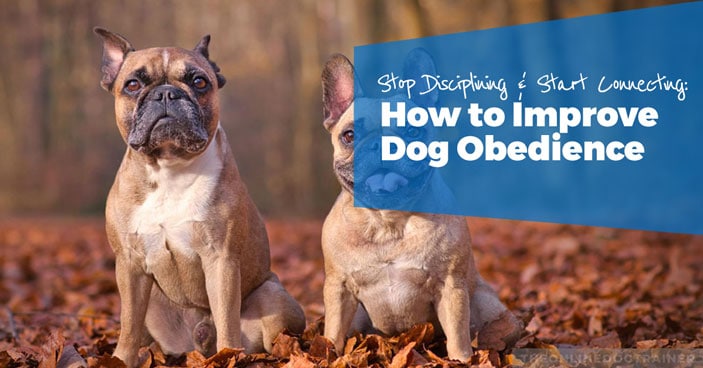
It’s a pet owner’s dream to have a dog that obeys every single command and doesn’t bark back.
And as you stare enviously at the friendly pooch playing a part on a TV show or notice just how well some canines perform in a competition, you might be feeling frustrated, wondering if your pup is broken because they can’t follow a simple “sit” or “stay” command!
The good news…it IS possible to improve your dog’s obedience so they listen to you…just like the dogs on TV!
It’s true!
As a dog owner, you want to be able to trust your dog and know that he or she will listen to your commands and always be on his or her best behavior.
Trust me when I say this: an obedient dog is possible for anyone (regardless of whether your dog jumps, pulls on the leash, obsessively barks, etc.).
So what are you missing then?
It all comes down to a lack of focus on your relationship with your four-legged friend.
What do I mean by that, and what do you need to do to get your dog to obey you when it matters most?
Let’s take a deeper dive into it all…
Unlock the Secret to Dog Obedience by Building Your Relationship
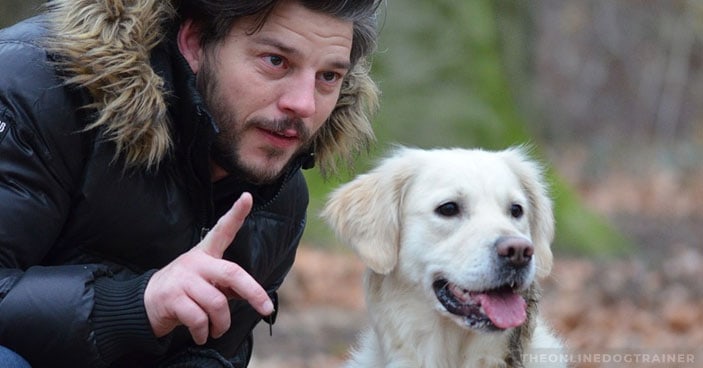
A solid relationship starts with you earning the trust of your dog. It’s vital that they look to YOU for direction…not the other way around!
In fact, many dog behavior issues that I see begin because the dog believes he or she is the pack leader and that it’s his or her job to take control or protect you. This is where the trouble begins as they believe it’s their job to call the shots.
Of course you don’t want your dog thinking they are the “leader” because then they’ll start making decisions…however the last thing you want is to FORCE your dog to listen to you physically or by causing them any discomfort.
Even more important to understand is that our dogs really don’t want to be the leaders in our human world as they don’t really understand how to navigate it, and it can actually be quite stressful for them. What they really want is for us humans to step up and be their kind and gentle leaders.
Sadly, I’ve seen countless dog owners resort to using forceful or unkind training devices like shock collars or choke chains, which ultimately unravel their relationships with their dogs.
Choosing to use a dog training method centered around fear will not set you up for long-term success.
Why?
You can’t force a dog into obedience.
Then how do you get a dog to obey your commands?
It all begins with building a healthy relationship with your dog, where he respects and listens to you because he inherently understands that you are the “leader” of the pack. This will help foster a lifetime of dog obedience.
Think about it this way…
Children might obey their parents because children know they will end up with a smacked bottom if they don’t follow the rules. However, once the parent leaves the house and a grandparent or sitter is in charge, the child’s behavior shifts because the “threat” is no longer present. There isn’t a healthy relationship foundation set where the child respects the rules because they look up to their parents they obey only because they don’t want to endure the punishment. If the child truly looks up to his or her parents and respects them, the child will follow the rules regardless of whether or not the parents are there.
That’s how you need to think about your relationship with your pup. If you are experiencing obedience issues, it’s likely because you haven’t earned your pup’s respect in a kind and gentle manner.
Why is My Dog Not Listening: The Importance of Understanding Your Dog’s Behavior
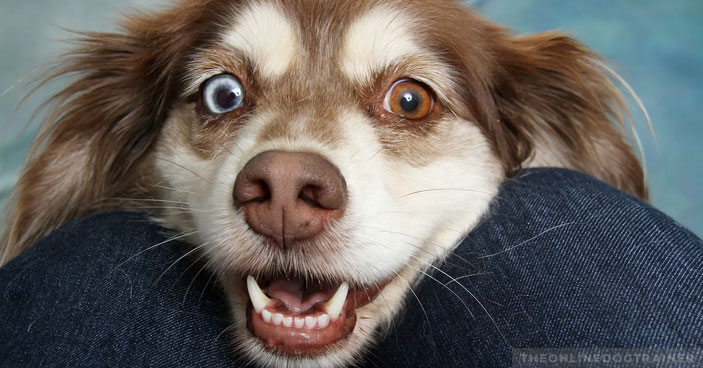
If you find that your dog is…
- Challenging you
- Ignoring your commands
- Possessive/protective over you or your property
… it’s most likely because she thinks that she is the one in charge! With this mind-set, dogs believe they can do whatever they want because they are the bosses.
How do you correct this mind-set?
You have to tap into the psychology of a dog and implement positive reinforcement training methods to earn your dog's loyalty and respect.
Important to note: I’m not talking about the “positive reinforcement training method” here. That’s an entirely different method of training altogether that began in the 1940s after a group of dog trainers decided they didn’t care for forceful training methods.
I’m totally on board with the idea that we must use kind and gentle methods to train our dogs. However, positive reinforcement training relies heavily on reward-based training techniques.
Example: A dog sits on command and they get a cookie.
While food can be a very powerful training tool, it’s not effective in treating the underlying cause of many dog behavioral issues.
Positive reinforcement alone with treats is not enough…what this method is lacking is learning how to establish a connection with your dog – a.k.a. winning your dog's mind so they will listen to you when it matters most!
I’ve helped thousands of dog owners do this with my Dog Calming Code™ program. This program focuses on building your relationship with your dog in a kind and gentle way, which sets the groundwork for every piece of training that follows.
It’s all about understanding dog behavior and what is going on inside your dog’s mind. Once you understand the way your dog thinks and why they behave the way they do, you can stop correcting and start connecting!

From this point forward, your dog will not take on the responsibility of the leader of your house, but will calmly become just another member of your family. Because you’ve taken away your dog’s responsibilities as “leader” they can finally just become a happy, relaxed member of your family.
How Winning Your Dog’s Mind Sets the Foundation for an Obedient Dog
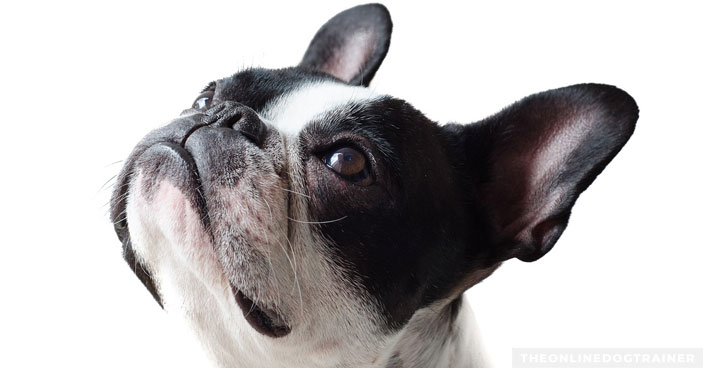
I talk often about using kind and gentle tactics when training your dog. That’s because using a fear-based system to train your dog can actually make your dog’s behavior worse.
You may be thinking, “What’s so bad about a chain collar? I see people using them all the time to make their dog listen.”
By using forcible dog training methods to make your dog obey your commands, you run the risk of:
- Spurring aggressive tendencies in a dog who already displays fear toward you or other people
- Causing your dog to become anxious, which leads to a variety of other behavior issues (chewing, barking, pacing, etc.)
- Never being able to train your dog to listen to you when it matters most because your pup doesn’t respect you.
I ALWAYS encourage kind and gentle training methods that focus on building a strong connection between you and your dog so you can live a life full of love and obedience. It’s all about winning your dog’s mind so they CHOOSE to listen to you.
If you want an obedient dog who listens to you because they trust you and look up to you, I encourage you to take a look at my Dog Calming Code™ program. This program provides all the tools you need to navigate dog ownership and obedience successfully via positive and kind training tactics.
Learn more about my affordable Dog Calming Code™ program here!
Best of luck,
~Doggy Dan 🙂

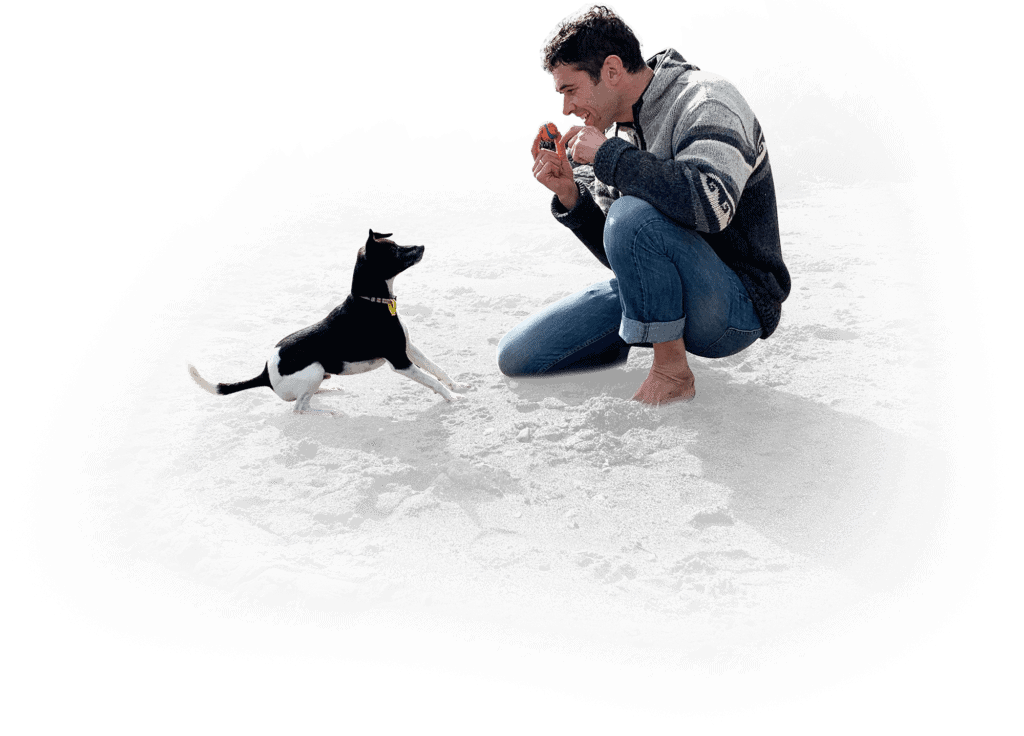

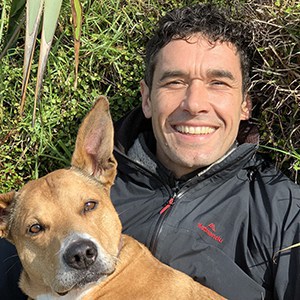

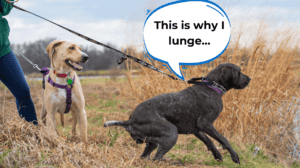
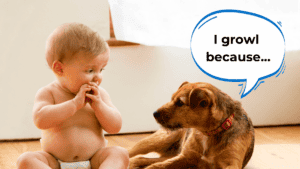
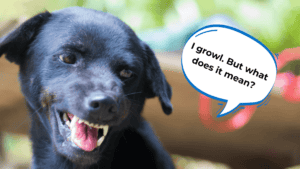

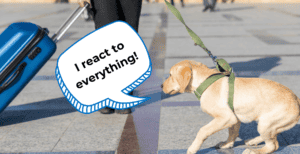
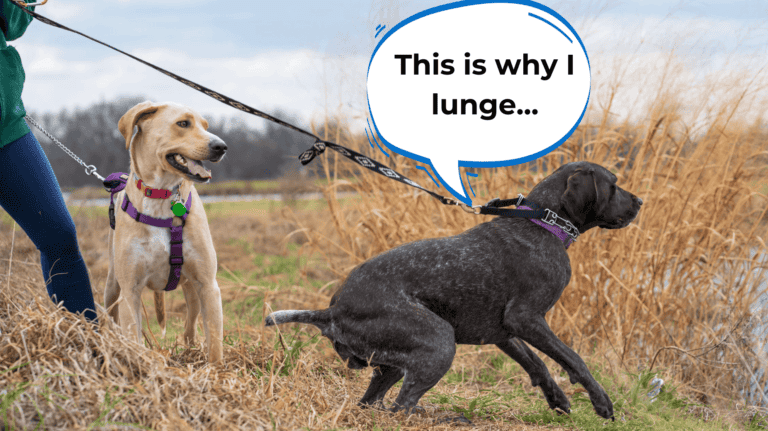
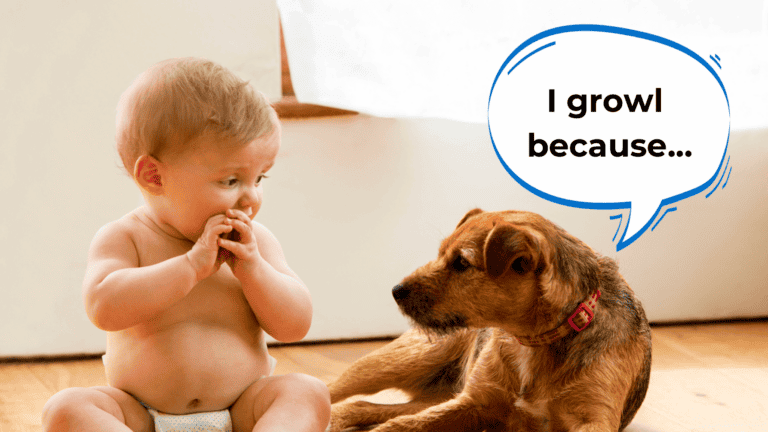
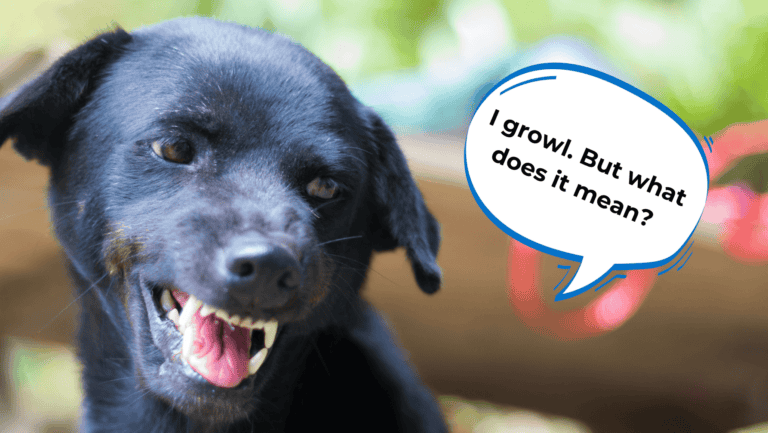

16 Responses
I like that you talk about a child who will respect their parent and will follow their rules no matter what. I hope that can also be applied to my pet once I have a dog which I plan to get next year. It must be important for me to look for programs that offer problem-solving techniques for dogs and obedience courses for the pet that I’m going to get. With the help of professionals, I might be able to ensure that the pet I am going to have is going to be obedient and will not be aggressive or reactive at all.
There’s lots more on my website https://theonlinedogtrainer.com
I have a 10 month old female Springer Spaniel (she has had 6 weeks of training), who continues to jump up on us and others. She loves tissues or anything she can take off of a end table and refuses to release it, even with a dried liver treat. My husband tried to remove a kleenex from her mouth and she growled and showed her teeth, we just ended up; letting her eat it.
Do you have any suggestions?
Thank you
Hi!
These types of attention seeking behaviours are ones that our dogs quickly realise usually work, which means that they will continue to do them. I’m not saying that we should just allow them to jump up on us or steal items, just that our response needs to be more measured….so that we don’t turn it into a game, or reward that behaviour with attention. If your dog is jumping up on you then my recommendation is to make sure that you avoid speaking to them or making eye contact, just try to ignore the behaviour. However, if they are really persistent or rough then you can calmly remove them from the room for a few minutes and then wait until they are calm and quiet before you allow them out again.
With stealing the response is similar, avoid speaking to them or making eye contact and certainly avoid chasing them to retrieve the item! Just calmly try to remove the item with as little fuss as you can, and if they do growl then remove them from the room as above. I will say that you should not try to remove a food from your dog in this way, as this may result in a much more intense reaction from them. All the Best, Doggy Dan
My dog was fine at first with other dogs. Now when we are on our walks she just loses her mind at other dogs. We used to go to the dog park every day during our walks but not anymore. She just starts barking and growling and lunging at them if they get to close.
Hi Dani,
A change in behaviour can be really common for dogs, and it can happen for many reasons. It may be that as your dog aged she became increasingly reactive, or she may have had an encounter with another dog that left her feeling vulnerable and anxious. Whatever the cause the great news is that you can overcome her behaviour. I have some fantastic resources on my membership website (theonlinedogtrainer.com) that will guide you on how to start doing this, or you can check out some of my other blogs that relate to this behaviour. All the Best, Doggy Dan
Hi there,
This is my first time visiting your page and everything I’ve read so far clicks.
My four-year-old pitbull mix Lola suffers from extreme separation anxiety. But this isn’t the normal case that you’re used to hearing, she doesn’t destruct my house or bark when I’m gone but she’s self mutates / destructs. We had her allergy tested and medicated for over two years to no avail with helping her skin issues. I then changed her diet and her skin cleared up dramatically but the one thing we’re still facing is separation anxiety.
Her skin is all under control now but she still will eat herself or it yourself alive when I’m gone. There will be times I come home to her eyes swollen shut from rubbing them so hard on the couch, she has no pain tolerance. I’ve really contemplated her quality of life but I believe that this could be our last Step to take in order to help our girl.
We are really at our wits end and I don’t even know where to begin with her.
Hi Erin,
Dogs can work themselves into a real bother as a result of Separation Anxiety. I have encountered many dogs who self mutilate themselves and it is really a very sad thing to witness. The reason that dogs chew/destroy is because it helps release a feel-good hormone (endorphin) that is aimed at calming themselves down when they feel anxious. When owners understand what exactly is causing this anxiety and how to treat it correctly then their dog can live a happy and stress-free life. My website TheOnlineDogTrainer.com shows you very clearly how to achieve this…maybe take a quick look…its a $1USD trial for 3 days…All the Best, Doggy Dan
Looking for a trianing program to eliminate excess barking
Hi Mark,
We definitely cover a range of different barking on my website. First of all though it’s important to identify why the dog is barking (Eg. Separation Anxiety, Threat, Excitement, Attention) and then you can put strategies in place to overcome the behaviour. My website TheOnlineDogTrainer.com shows you very clearly how to achieve this…maybe take a quick look…its a $1USD trial for 3 days…all the best Doggy Dan
I think you are so so awesome and love all your videos, they are so fun, and you are great to listen too!! I love my pup, 6 months, but he such a strong sense of resource guarding, where he will lunge at me biting, and only me.. and then strong leg holding, then humping.. I am trying to do all the rules.. but the food bowl and chewies are a big no, and taking things out of his mouth that he is not supposed to have is a big no… I am working on the drop and leave it, but he gets overwhelmed by just wanting the treats I am holding. He is great in most other areas, but this one is a scary one for me.
I do the drop the treat in the bowl, ‘leave it, drop it with a treat, once he went from the treat then reached back to get what he dropped and got my hand badly. He is only 6 months, but this has to be fixed… I am working hard on it!!! appreciate it all and thank you!!
Hi Kristen,
You do need to be very careful when working with dogs who resource guard their food. One thing I don’t recommend is simply trying to remove food as a way of desensitising them to it….practice and training needs to be more structured than that and in some cases, where the instinct to protect food is really strong, then erring on the side of caution is preferred. From our dog’s perspective food is a very valuable resource that really does mean the difference between life and death. When a dog has food in their possession their instinct tells them that they are totally justified in defending that from being taken away from them, so I really don’t recommend trying to do this…even with dogs who are not aggressive around their food. I want dogs to know that when food is in their possession they will be left in peace to enjoy it, I won’t try to remove it from them or challenge them for that resource. If bones/chews are an issue then I either only give those in a space where a dog can be left alone to eat, or I don’t give those items if they cause a strong reaction. My membership website covers this issue and teaches owners how to correctly address this behaviour…maybe take a quick look…its a $1USD trial for 3 days…All the Best, Doggy Dan
My 4 1/2 month Rottweiler puppy isn’t getting the potty training very well. We will take her out and wait for about 10-15 min. She won’t go outside and when we come in, she will go inside. She has it backwards. We’ve been teaching her with a sweet “good potty” when she goes outside since she was 6 1/2 weeks old. She holds it all night, no accidents then but sometimes we see 2-3 spots on the floor. She’s not holding it during the day. What am I missing?
Hi Barbara….Potty training a puppy can take a lot of patience, supervision and consistency. The biggest tip I can give owners is to set a good routine and try to be proactive, taking puppy out regularly to help avoid accidents. It is also common for puppies to be able to hold on for longer periods during the night because they are less active and their body slows down to rest….during the day they are much more active and need to use the toilet more frequently. If you take your puppy out to toilet and she does nothing then bring her back indoors BUT keep a close eye on her and be ready to take her out again quite soon….it may be a good idea to crate/pen her when you do bring her indoors again so she doesn’t sneak off out of your sight!
Puppies can get really distracted when they are outside and this can mean they ‘forget’ to toilet, once that distraction has gone they then remember that they need to go to the toilet. Finding a quieter place in your garden for your puppy to use, even having her on a leash or long-line can help avoid her becoming distracted.
We do have a really comprehensive section on ‘Toilet Training’ on my membership website…maybe take a quick look…we have a $1USD trial for 3 days…All the Best, Doggy Dan
I have been following you program with my dog and have had success up to a point. Jiffy will catch a scent and then I lose him. It is like he is transfixed and oblivious to anything else. Sad to say I had to resort to an e-collar to get his attention back and then we are back to your program. I feel like a failure because I can’t get past this problem with him. Treats don’t tempt him nor his favorite ball.
Hi Laura,
I understand your frustration…some dogs do require a lot more patience and input than others. Whenever owners report that their dog’s behaviour has plateaued, and they feel they aren’t quite pushing through the issue, I recommend a review of the 5GR’s to ensure they are still on track. It can be really common to unconsciously relax some of the rules, or even miss elements of them when they were first viewed, and this can have a big impact on how a dog’s behaviour progresses. One thing I have learnt through many years of working with dogs is that ‘the devil is in the details’ and for some dogs those missing details are important.
When heading out on a walk also make sure Jiffy is genuinely calm and responsive, before allowing him too much freedom. In fact using a long-line to work on his recall, but not lose total control, is a fantastic training strategy. When you feel his behaviour is generally good on-leash then it’s time to consider giving him more freedom and extending the learning process. If we give our dogs too much freedom too early then we can lose the ability to create new habits. All the Best, Doggy Dan